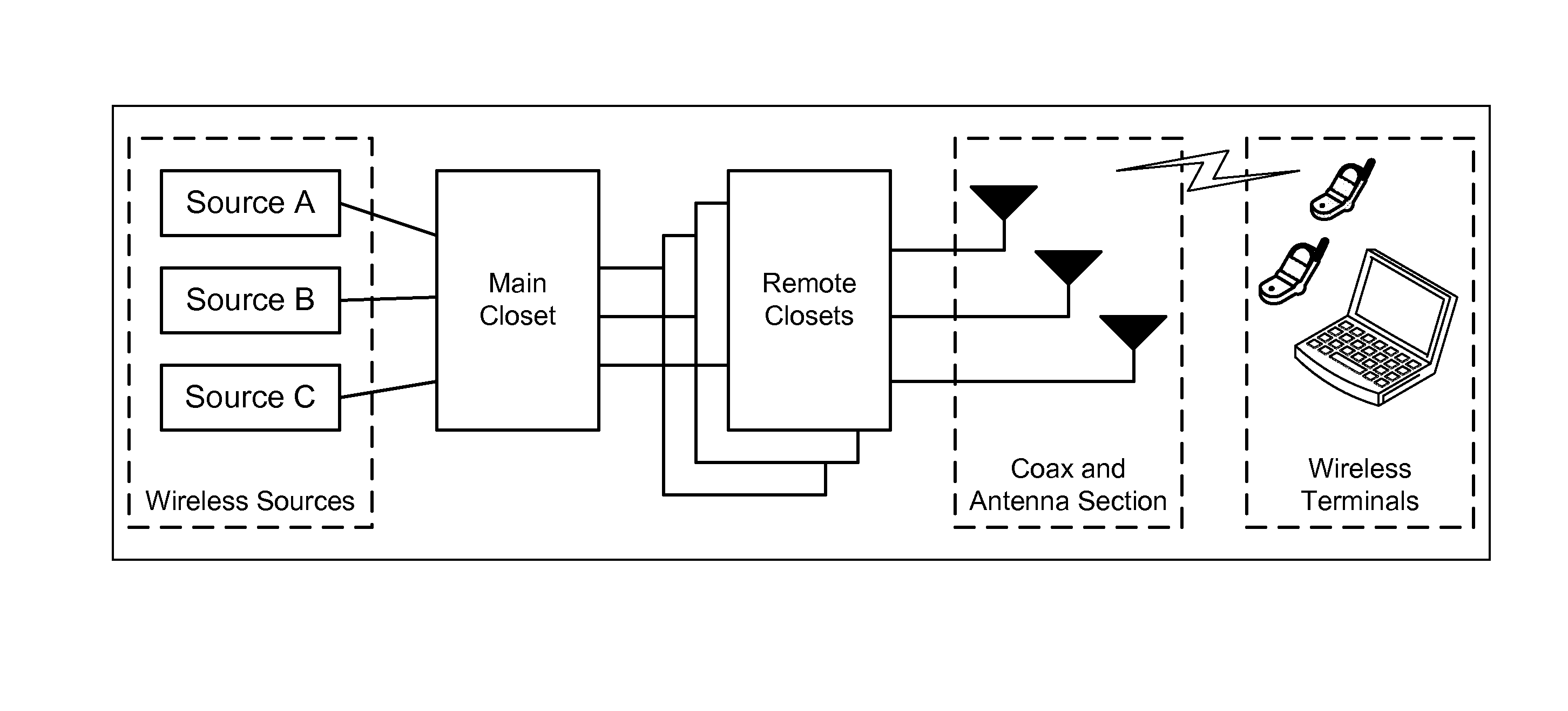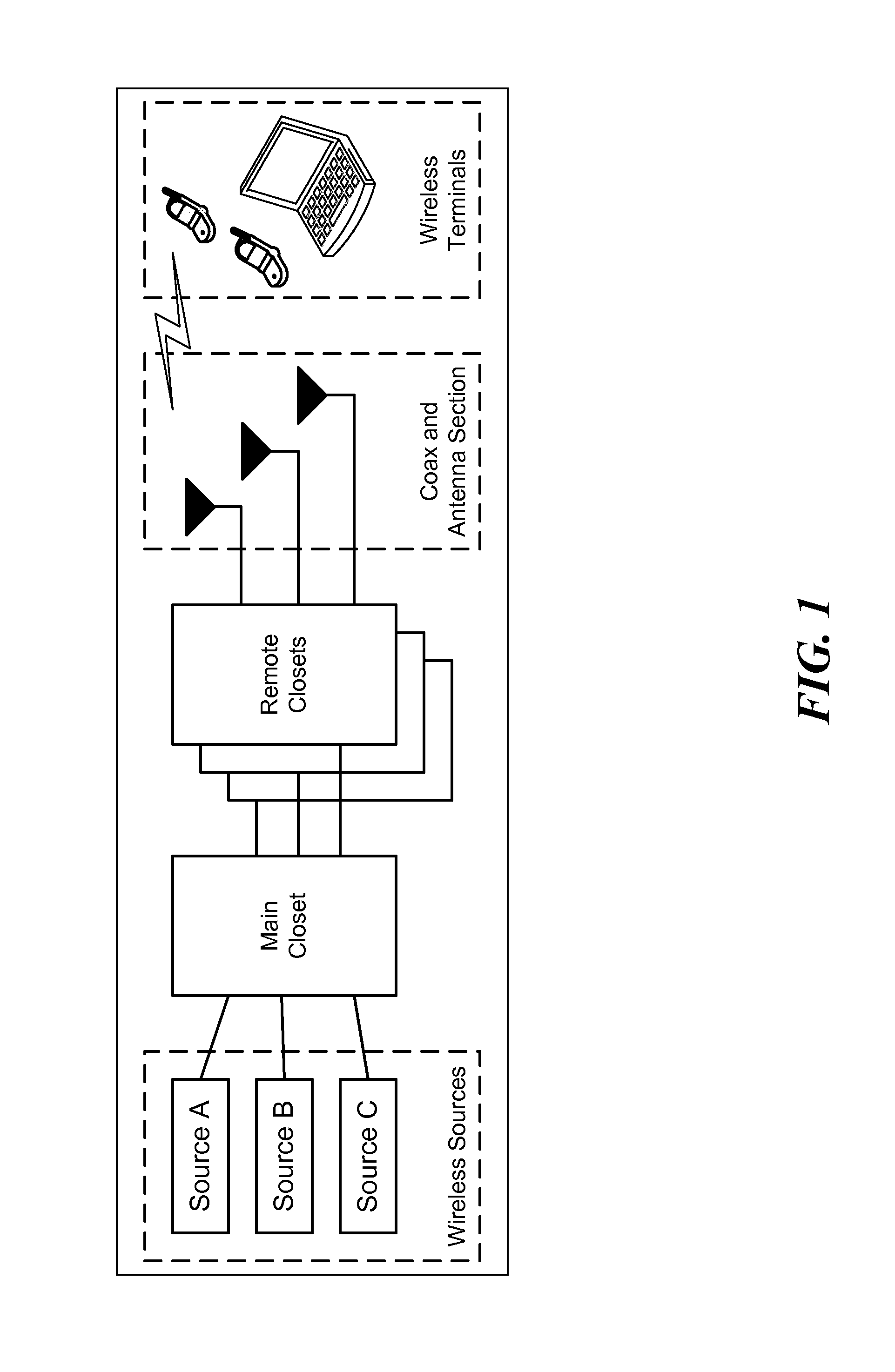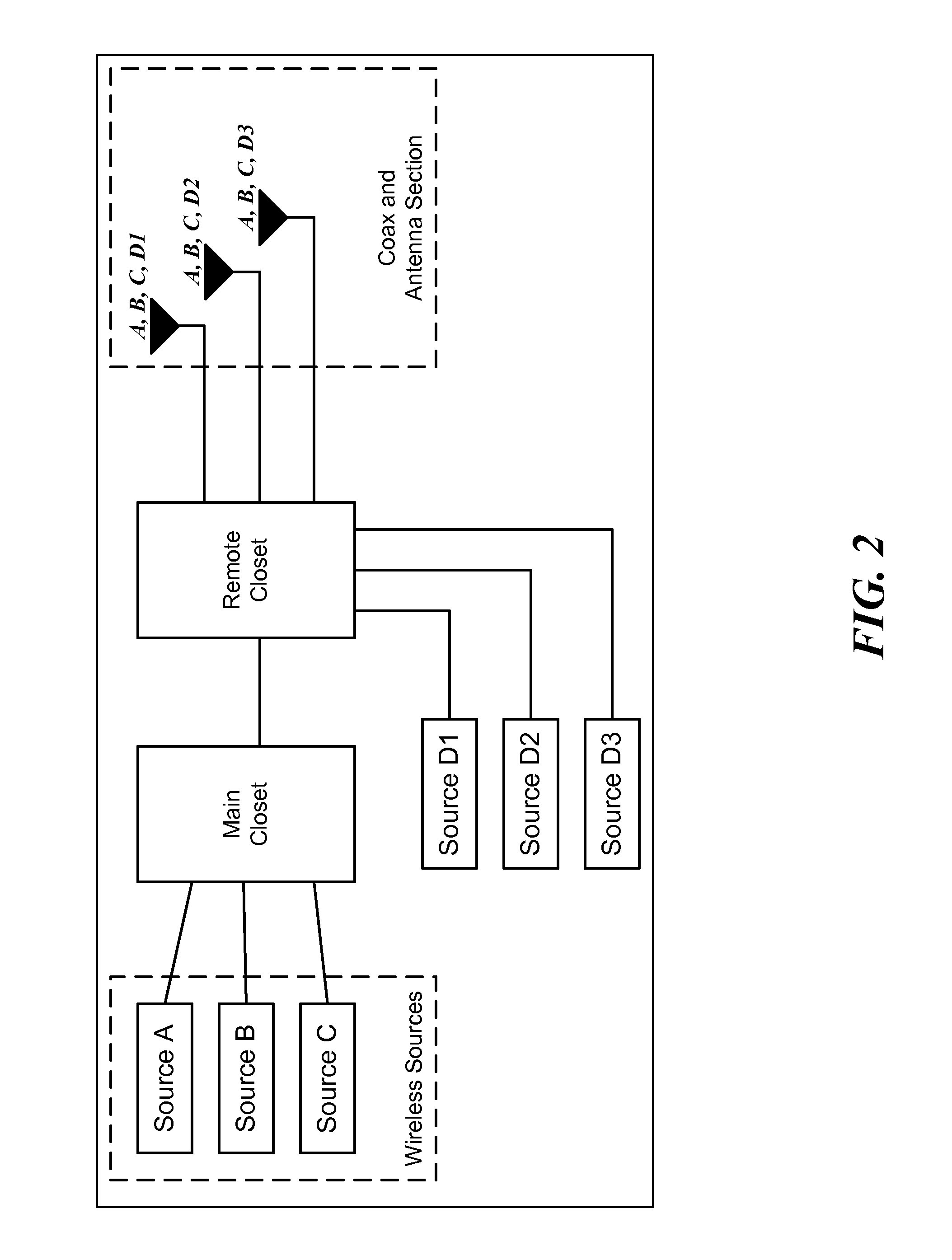Method and System for Equalizing Cable Losses in a Distributed Antenna System
- Summary
- Abstract
- Description
- Claims
- Application Information
AI Technical Summary
Benefits of technology
Problems solved by technology
Method used
Image
Examples
Embodiment Construction
[0042]The present invention is directed to a method and system for compensating for cable losses in distributed antenna systems. In accordance with one embodiment of the invention, the system includes a measurement component adapted to receive a measurement signal having a known frequency and power level and for determining or estimating the losses of a signal transmitted at one end of the cable run and received at the other end of the cable run. In accordance with the invention, the system further includes an equalization component adapted for receiving the information about the determined or estimated cable run losses and for adjusting the signal level to a predetermined value. Each cable run in the DAS can include the system according to the invention whereby the signal levels of each cable run can be adjusted to the predetermined value. In one embodiment, the signal level corresponding a particular service or frequency range or band at the connection to the antenna unit can adju...
PUM
 Login to View More
Login to View More Abstract
Description
Claims
Application Information
 Login to View More
Login to View More - R&D
- Intellectual Property
- Life Sciences
- Materials
- Tech Scout
- Unparalleled Data Quality
- Higher Quality Content
- 60% Fewer Hallucinations
Browse by: Latest US Patents, China's latest patents, Technical Efficacy Thesaurus, Application Domain, Technology Topic, Popular Technical Reports.
© 2025 PatSnap. All rights reserved.Legal|Privacy policy|Modern Slavery Act Transparency Statement|Sitemap|About US| Contact US: help@patsnap.com



